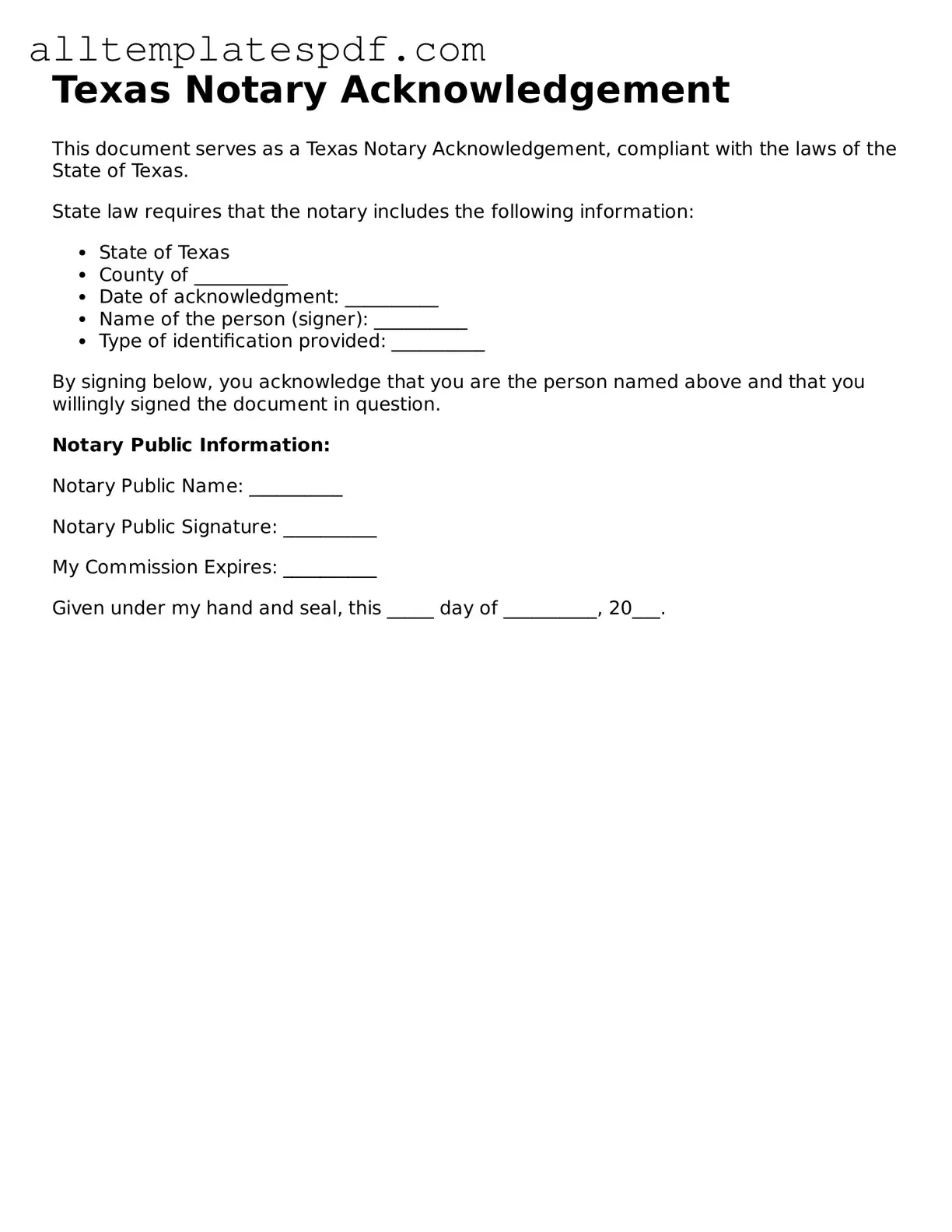When completing the Texas Notary Acknowledgment form, individuals may inadvertently make mistakes that can lead to complications down the line. One common error is failing to properly identify the signer. It is crucial to ensure that the name on the document matches the name of the person appearing before the notary. If there is any discrepancy, the acknowledgment may be deemed invalid.
Another frequent mistake involves neglecting to include the date of the acknowledgment. The date serves as an important record of when the notary verified the signature. Without this information, the document may lack credibility, and its legal standing could be questioned. Always double-check that the date is clearly written and accurate.
In addition, some individuals overlook the requirement for the notary to sign and stamp the acknowledgment. The notary's signature and seal are essential components that authenticate the document. If either is missing, the acknowledgment may not hold up in legal proceedings, rendering the entire process ineffective.
People also sometimes forget to check the jurisdiction in which the notary is authorized to operate. Each notary has specific boundaries within which they can perform their duties. If a notary acknowledges a document outside of their jurisdiction, it may not be recognized by the courts. Thus, confirming that the notary is operating within their designated area is vital.
Lastly, it is important to ensure that the acknowledgment form is filled out completely. Leaving any sections blank can raise red flags and create confusion. Each part of the form serves a purpose, and omitting information can lead to delays or rejection. A thorough review of the completed form can help prevent these issues and ensure that the acknowledgment is valid.
